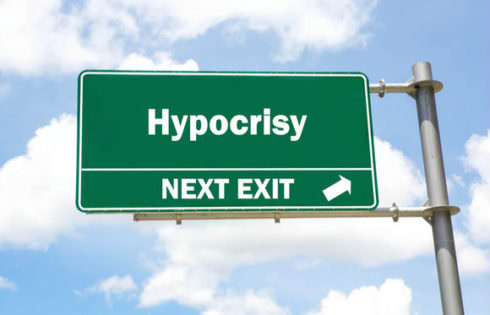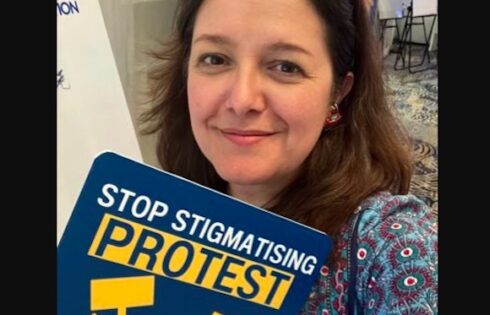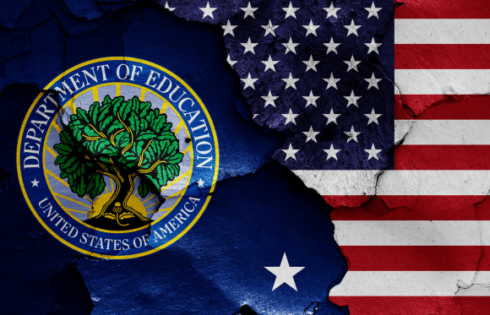
Expect more racial protests like at the University of Missouri if the Supreme Court strikes down race-conscious admissions at the University of Texas-Austin.
That was the prediction from education scholars who claim that “science” backs their view that admitting students based on race will benefit students of all demographics.
The American Educational Research Association (AERA), which filed a brief defending UT’s system of racial preferences, hosted an event in Washington Monday in anticipation of the Supreme Court’s second hearing of Fisher v. UT Wednesday.
In response to plaintiff Abigail Fisher’s claim that UT’s consideration of race violated the Equal Protection Clause – and kept her out – the high court remanded the case to the appeals court to more closely scrutinize UT’s program. After the 5th U.S. Circuit Court of Appeals upheld the program, the Supreme Court once more took Fisher’s appeal.
The racial protests that have gripped campuses nationwide prove the “compelling interest the state has” in promoting diversity in education, said AERA Executive Director Felicia Levine to open the panel discussion.
Court will probably uphold race-conscious admission ‘in some form’
The “compelling interest” question, rather than whether UT’s program was “narrowly tailored” to accomplish the benefits of “diversity among its student body,” is the basis of Fisher’s appeal.
That surprised Angelo Ancheta, counsel of record for AERA’s brief and law professor at Santa Clara University, who told the audience Monday he thought it “unlikely” the court would overturn its 2003 Grutter decision that upheld the use of race as one of many factors in admissions.
“There certainly is a lot of skepticism” about Grutter’s holding, and Justice Anthony Kennedy is guaranteed to be the deciding vote, particularly because Justice Elena Kagan has recused herself, Ancheta said.
But if the remaining justices don’t split 4-4, leaving in place the appeals court ruling and UT’s program, Kennedy’s majority vote in a 5-3 decision would almost certainly preserve “race-conscious admissions in some form,” just not UT’s program, Ancheta said. He told a questioner that Kennedy is uncomfortable with “individualized” race considerations, but the justice has to ask himself “‘what am I leaving?’” if UT’s program is overturned.
‘No feasible non-racial alternatives’ to improving diversity (affordably)
The justices’ attention to campus protests may affect how they rule, whether they see protesters as furthering a “healthy debate” on the legacy of racism or stamping out the views of critics, law professors told The New York Times last week.
The alternative to explicit consideration of race is using plans like Texas’s “top 10 percent” rule, under which the top 10 percent of each high school graduating class is guaranteed admission to its public universities. (UT-Austin is permitted under the law to accept only the top 7 percent of graduates.)
RELATED: Race Preferences, Interracial Marriage and Strict Scrutiny: The ‘Fisher’ Case
Ancheta said plans like top-10 “just don’t work” to accomplish the same benefits of race-conscious admissions, such as improved “campus climate” and reduction of prejudice, “hate crimes” and “stereotype threat,” in which minority students perceive they are stereotyped and thus perform worse.
Gary Orfield, a research professor of education at UCLA, said the combined findings of 800 researchers in 46 states showed there was “no feasible non-racial alternatives” that would produce diversity at “tolerable administrative expense,” the threshold in the first Fisher ruling.
California has spent two decades “trying every alternative” to race-conscious admissions to bump up diversity, spending billions, “and they have failed,” Orfield said. Minority admittance in Texas has gone up since an early plunge but that’s largely a reflection of “changing demography in Texas” as more Latinos apply for college but black admittance stays flat.
RELATED: Supreme Court Strikes Blow to Racial Preferences in College Admissions
Admittance by “socioeconomic status” is not enough by itself to create racial diversity either, Orfield said: “For these universities it isn’t either-or,” but both race and poverty as criteria.
Better to speak of ‘support mechanisms’ than ‘critical mass’ as the goal
Affirmative-action backers should take a page from Justice Antonin Scalia and stop using the term “critical mass” to describe their objective, said Liliana Garces, assistant professor of education at Pennsylvania State University.
To speak of diversity “primarily in terms of numbers or percentages,” which treads near outlawed quotas, excuses institutions from providing “support mechanisms” that lead to success, Garces said. Those include creating a “positive racial climate,” recognizing “historical legacies of exclusion” at each institution and admitting students to create socioeconomic diversity within racial diversity.
RELATED: Harvard president goes to church to defend discrimination against Asian-American applicants
Garces said her research showed that after states imposed bans on race considerations, medical students of color dropped from 18 of 100 med students to 15. It also led administrators such as those at the University of Michigan – the plaintiff in Grutter – to feel “less empowered” to talk about diversity, creating the conditions for protests like Mizzou’s, she said.
Diversity is crucial at the institution level in the science, technology, engineering and math (STEM) disciplines because “the action is in the classroom, the laboratory and the research group,” said Shirley Malcom, head of education for the American Association for the Advancement of Science, which backs AERA’s brief.
“Isolation becomes the norm” for minority students, who have strong interest in STEM fields when they start but drop out of those studies at each new level, Malcom said. Those remaining have to “deal with assumptions about their capability.” She claimed about 150 black students and 250 Latino students got doctorates in one year where the total was around 10,000.
RELATED: Harvard discriminates against Asian Americans, ‘similar challenges’ planned
Can’t tiptoe around ‘segregation’
Saying that Malcom’s phrase “supportive collegial environments” was a better way to describe affirmative action, a Canadian Ph.D. audience member asked panelists why they use the phrase “segregation” rather than “underserved students of color.” When they talk about segregation, “all you do is raise the race flag again” and drive some people to “tune out” the message.
Educators can’t talk about affirmative action without harping on segregation, UCLA’s Orfield responded: “The fact is we have been resegregating our public schools” for three decades under court rulings.
The panel moderators did not take a question submitted by The College Fix on whether a Supreme Court ruling in favor of UT’s program could increase the suspicion on campuses that minorities had not earned their acceptance based on conventional academic performance.
RELATED: Former admissions dean admits truth: ‘Racial stereotyping is alive and well’
Like The College Fix on Facebook / Follow us on Twitter







Please join the conversation about our stories on Facebook, Twitter, Instagram, Reddit, MeWe, Rumble, Gab, Minds and Gettr.